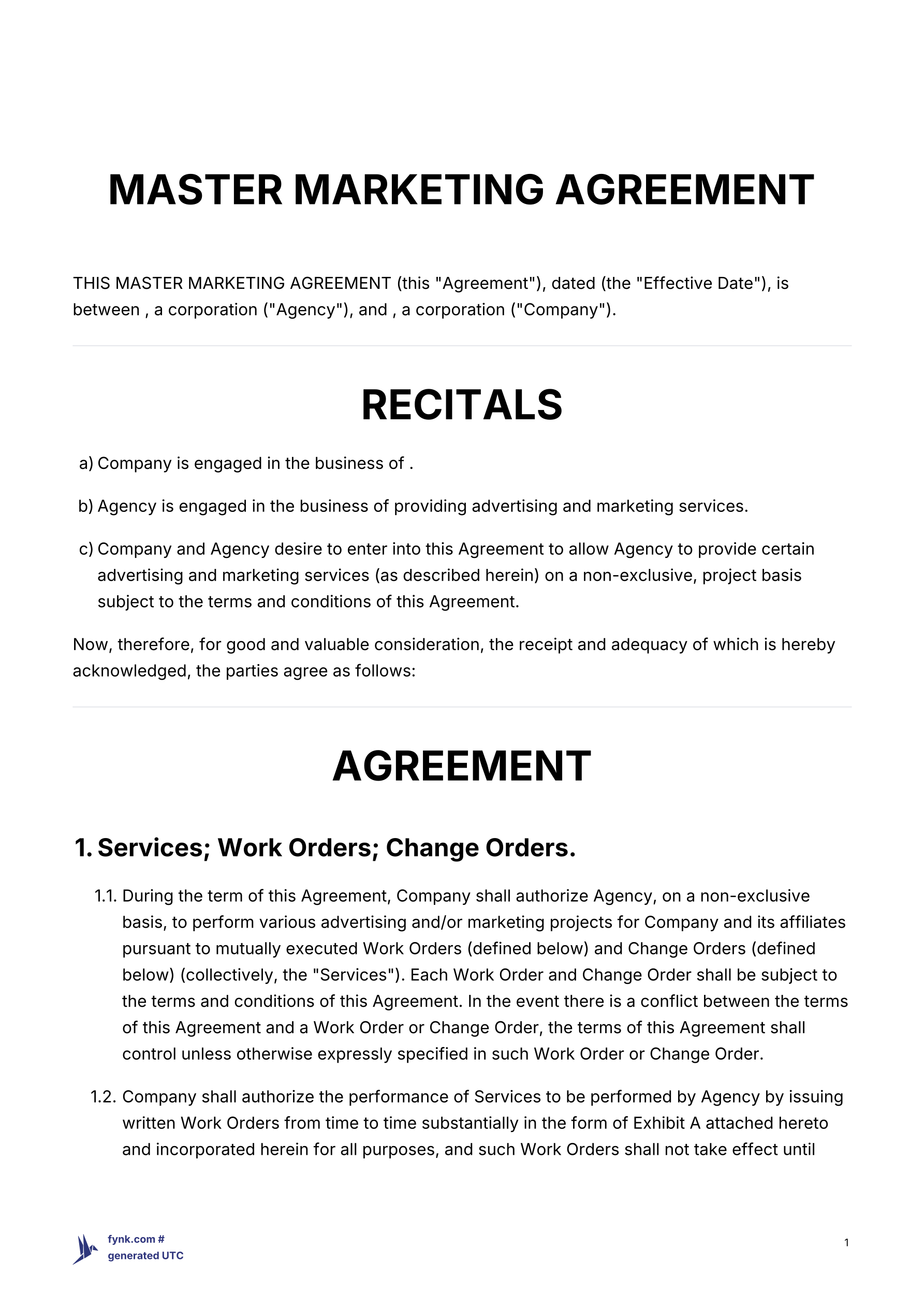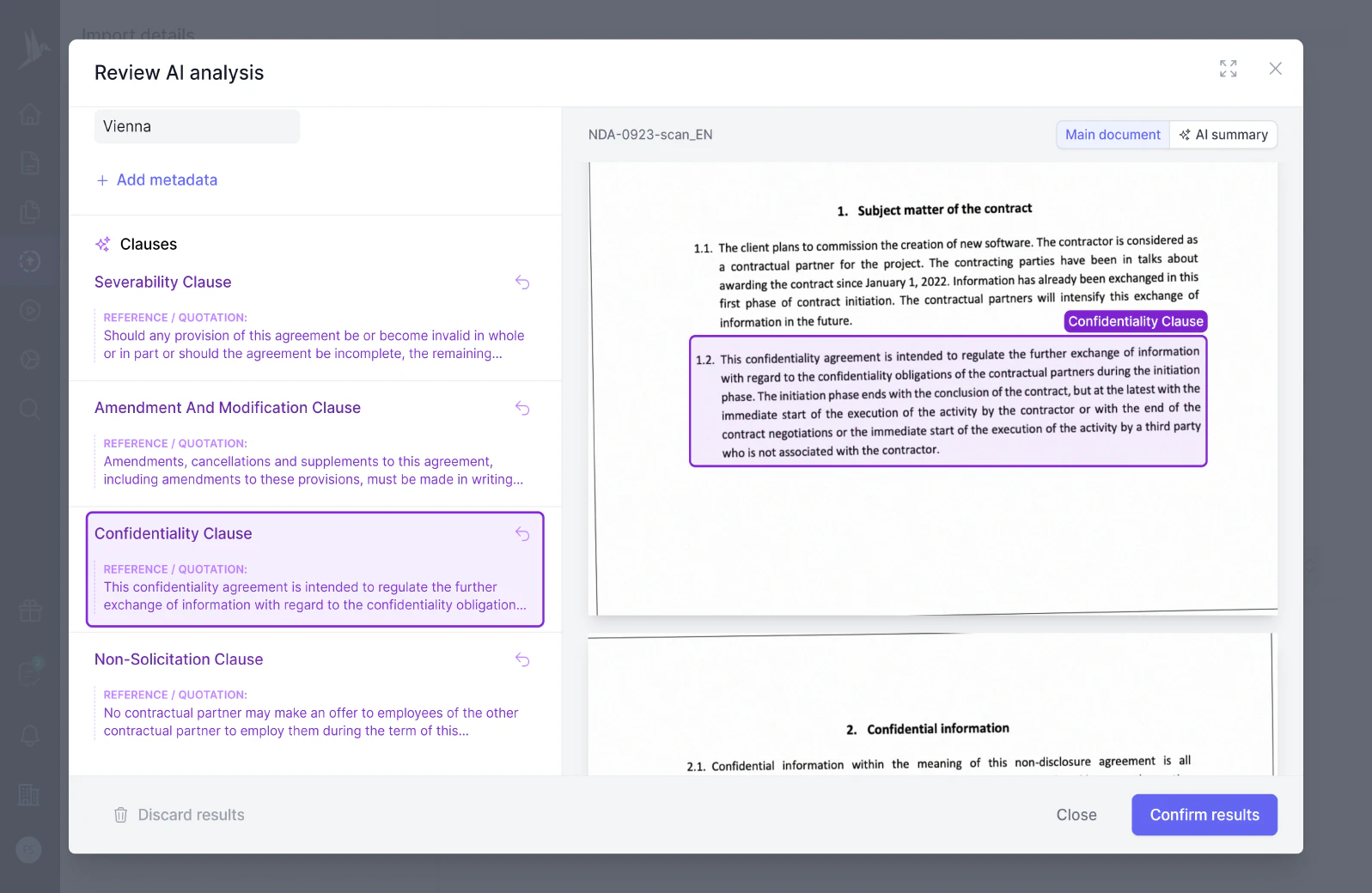
Master Marketing Agreement Template
A master service agreement (MSA) template that providing a framework for long-term client–service provider relationships.
A change order clause in a contract outlines the procedures for making amendments to the original agreement, including alterations to scope, cost, or timeline. It specifies how changes should be documented, authorized, and implemented to ensure clear communication and mutual consent between the parties involved.
[A] This Change Order shall constitute a full and final settlement and accord and satisfaction of all effects of the change reflected in this Change Order upon the Changed Criteria and shall be deemed to compensate Contractor fully for such change. Initials: /s/ SS Contractor /s/ DC Owner
Upon execution of this Change Order by Owner and Contractor, the above-referenced change shall become a valid and binding part of the original Agreement without exception or qualification, unless noted in this Change Order. Except as modified by this and any previously issued Change Orders, all other terms and conditions of the Agreement shall remain in full force and effect. This Change Order is executed by each of the Parties’ duly authorized representatives.
Pursuant to Article 6.1 of the Agreement (Change Orders Requested by Owner), Parties agree this Change Order includes the East Jetty Cooldown Line & Simultaneous Ship Loading Modifications requested by Owner to include in Contractor’s Scope of Work as detailed in Exhibit 4 of this Change Order. 2. The summary cost breakdown for the total Scope of Work of this Change Order is detailed in Exhibit 1 of this Change Order. 3. The detailed cost breakdown for the Scope of Work of this Change Order is provided in Exhibit 3 of this Change Order. 4. Schedules C-1 and C-3 (Milestone Payment Schedules) of Attachment C of the Agreement will be amended by including the Milestones listed in Exhibit 2 of this Change Order.
This Change Order includes the costs during the 2nd Quarter of 2019, and excludes all costs, cost impacts, or effects of the change associated with these trends beyond these dates. Any subsequent costs, cost impacts, or effects of the change associated with these trends beyond these dates will be assessed on a quarterly basis and included in separate, future Change Order(s).
CHANGE ORDER FORM Modifications to Schedule Bonus Language PROJECT NAME: Sabine Pass LNG Stage 4 Liquefaction Facility OWNER: Sabine Pass Liquefaction, LLC CONTRACTOR: Bechtel Oil, Gas and Chemicals, Inc. DATE OF AGREEMENT: November 7, 2018 CHANGE ORDER NUMBER: CO-00015 DATE OF CHANGE ORDER: February 10, 2020
By way of this Change Order, the Performance and Attendance Bonus Provisional Sum Provisional Sum in Section 2.2 of Schedule EE-3 of Attachment EE of the Agreement shall be decreased by Five Million U.S. Dollars (U.S. $5,000,000), and transferred to the Performance and Attendance Bonus Provisional Sum in Section 2.2 of Schedule EE-2 of Attachment EE of the Agreement, and the new value of the Aggregate Performance and Attendance Bonus Provisional Sum is Forty-Two Million U.S. Dollars (U.S. $42,000,000).
A Change Order is a formal document used in project management to record and authorize amendments to a contract or agreement. These changes can involve modifications to the scope of work, timelines, deliverables, or pricing. Change orders are typically necessary when unexpected challenges arise, new requirements are identified, or adjustments need to be made to the original plan due to evolving circumstances.
A Change Order should be used in the following scenarios:
Writing a Change Order involves several key steps:
Example: “The client requested an additional feature that was not in the original scope, which will extend the project timeline by two weeks and increase the cost by $5,000. The change order includes a detailed description of the feature, updated timelines, and revised budget.”
Change orders are commonly found in the following types of contracts:
Having a clear, structured process for managing change orders is vital to maintaining project management discipline and ensuring that all changes are documented, authorized, and reflected in updated project plans.
These templates contain the clause you just read about.

A master service agreement (MSA) template that providing a framework for long-term client–service provider relationships.

A customizable subcontractor agreement outlining scope, responsibilities, payment terms, scheduling, insurance, and dispute resolution.
Dive deeper into the world of clauses and learn more about these other clauses that are used in real contracts.
The "Changes to Services" clause outlines the conditions under which modifications to the scope, nature, or execution of services may be implemented. It typically specifies the procedure for initiating changes, including the requirement for mutual agreement and potential adjustments to timelines and costs.
A choice of forum clause is a provision in a contract that designates the specific court or jurisdiction that will handle any legal disputes arising under the contract. This clause provides certainty and convenience for both parties by pre-determining where litigation will be conducted, potentially reducing legal costs and avoiding jurisdictional conflicts.
A "Choice of Law and Venue" clause specifies which jurisdiction's laws will govern the interpretation and enforcement of a contract, and identifies the location where any legal disputes will be resolved. This clause is crucial for providing clarity and predictability in the event of a legal dispute, ensuring that both parties are aware of the applicable legal framework and where they must file any legal actions.
Try our AI contract analysis and extract important clauses and information from existing contracts.
< <
Fill out the form and we will get in touch with you to give you a personal, customized demo of fynk.
Greetings!
I'm Markus, co-founder of fynk. After you've submitted the form, I'll swiftly get in touch with you.
Also, right after you submit your details, you can pick a time that works best for you for our meeting.

